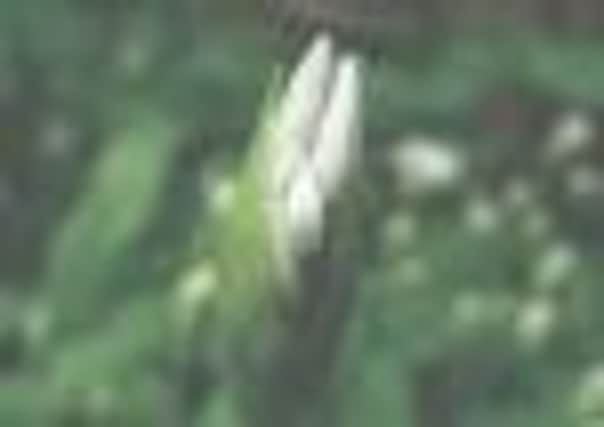There’s pickings a plenty out there for budding foragers


“Some of them were very good cooks and would use food they had found – just fantastic, the kind of thing you can’t buy in the supermarket. They harvested a lot of mushrooms so for the whole autumn we were eating fantastic mushroom pies and risottos.”
Sitting in the University of Edinburgh’s hi-tech School of Informatics building, the PhD student seems as far away from the countryside as it is possible to be. But it was his study of computing that allowed him to develop a website with an interactive map showing the many places across the country where everything from crab apples to mushrooms can be found.
Advertisement
Hide AdAdvertisement
Hide AdNot content with a simple list, he has also developed an iPhone app through which users can upload foraging sites to the database while out finding food in the wild. But the simple side of foraging is what really excites Kyle.
He says: “I actually enjoy going out on a walk and finding stuff more than eating it because it’s like a treasure hunt for grown-ups.” That treasure hunt has included finding almonds and figs in Edinburgh. The plants and trees providing more unusual bounty have often been grown for ornamental reasons in parks and gardens and have spread, says Kyle, stressing that you don’t even have to go into the countryside to forage for food: “Abandoned railway lines teem with brambles and raspberries, empty building sites are filled with wild flowers and medicinal plants grow alongside the canal.”
And the health benefits of finding and eating the produce you forage come in more ways than one. Kyle says: “If you were to start foraging you would probably start doing a lot of other things that are good for you. You are going out walking, you are learning more about where your food is coming from, you are eating organic, local and becoming aware of seasonality. So in that sense it is good for you.
“When you find a wild apple or a wild bramble they are not as big or as good-looking as ones you find in the supermarket but probably taste better, and also, when you are picking it and eating it off the tree it is a lot fresher.”
But is it sustainable to keep taking? Kyle has a simple rule of thumb to follow: leave at least a third for others, and a third for the birds. And the other essential is to make sure you don’t pick something which is going to make you ill. Kyle says: “At present we cannot realistically attempt to verify everything that is placed on the [website] map, so we ask our users to exercise their common sense when out foraging. Don’t harvest or consume a plant unless you have a good positive identification from a reputable source, such as a foraging handbook.”
The law on foraging means roots and bulbs may not be taken but virtually anything else can be picked from a plant, unless the plant is endangered. Gardens and farmer’s crops are, obviously, out of bounds but under right to roam legislation there is big potential for foraging. Rob says: “It [the law] is intended to say you can harvest the brambles around a field but not the wheat in the field – it is common sense.”
You would expect foraging to produce a lot of food in autumn, but Kyle says it is possible to find things all year round: “Spring, summer and autumn are the most productive times but in winter you get some brassicas. It is similar to being a gardener; there are some winter crops so the wild versions of those can be harvested. Once upon a time hunter-gatherers lived in the UK so there must be a way of surviving.”
Emma Chapman, the secretary of the Scottish Wild Harvest Association, which promotes sustainable foraging, agrees the abundance of food growing in the wild is attracting a greater numbers of foragers.
Advertisement
Hide AdAdvertisement
Hide AdShe says: “Foraging used to be a really obscure thing that people would probably think was a bit strange and not very interesting, whereas these days so many people want to learn more and are interested, so it is definitely on the increase.”
And all types of people are becoming involved. Chapman says: “It is not any kind of stereotype because I think everybody has a little bit of connection with it, even if it is only that their mother or grandmother used to make bramble jelly.”
Celebrity chef Nick Nairn is in no doubt about the attraction of foraging. He has recently returned from Ireland where he met a forager who introduced him to some “mind-blowing” produce, including “the best watercress I have ever tasted”. He adds: “There is a terribly invasive thing, Japanese knotweed…it is very tasty. You eat the stem itself, peeled and poached. Another treat is elder flower deep fried in batter – “they are just delicious”.
In his Cook School, near the Lake of Menteith, plants such as wood sorrel are used as garnish. But like many, Nairn enjoys the simple side of foraging as a good, healthy excuse to get outdoors.
He says: “Anything that gets people to go for a walk has to be a good thing. To be able to go out and gather stuff is fantastic. For me it is really nice to go out and pick up a few bits and pieces which you can chuck into dinner.”
But Nairn cautions: “Do not under any circumstances eat anything that you have foraged unless you are absolutely 100 per cent certain you know what it is or you have someone to identify it.”
Nairn says the shoreline can also provide good pickings including mussels, clams, shrimps and crabs. “My best foraging memory was cooking them up on a fire on the beach and making a kind of bouillabaisse with them, and it was fab.”